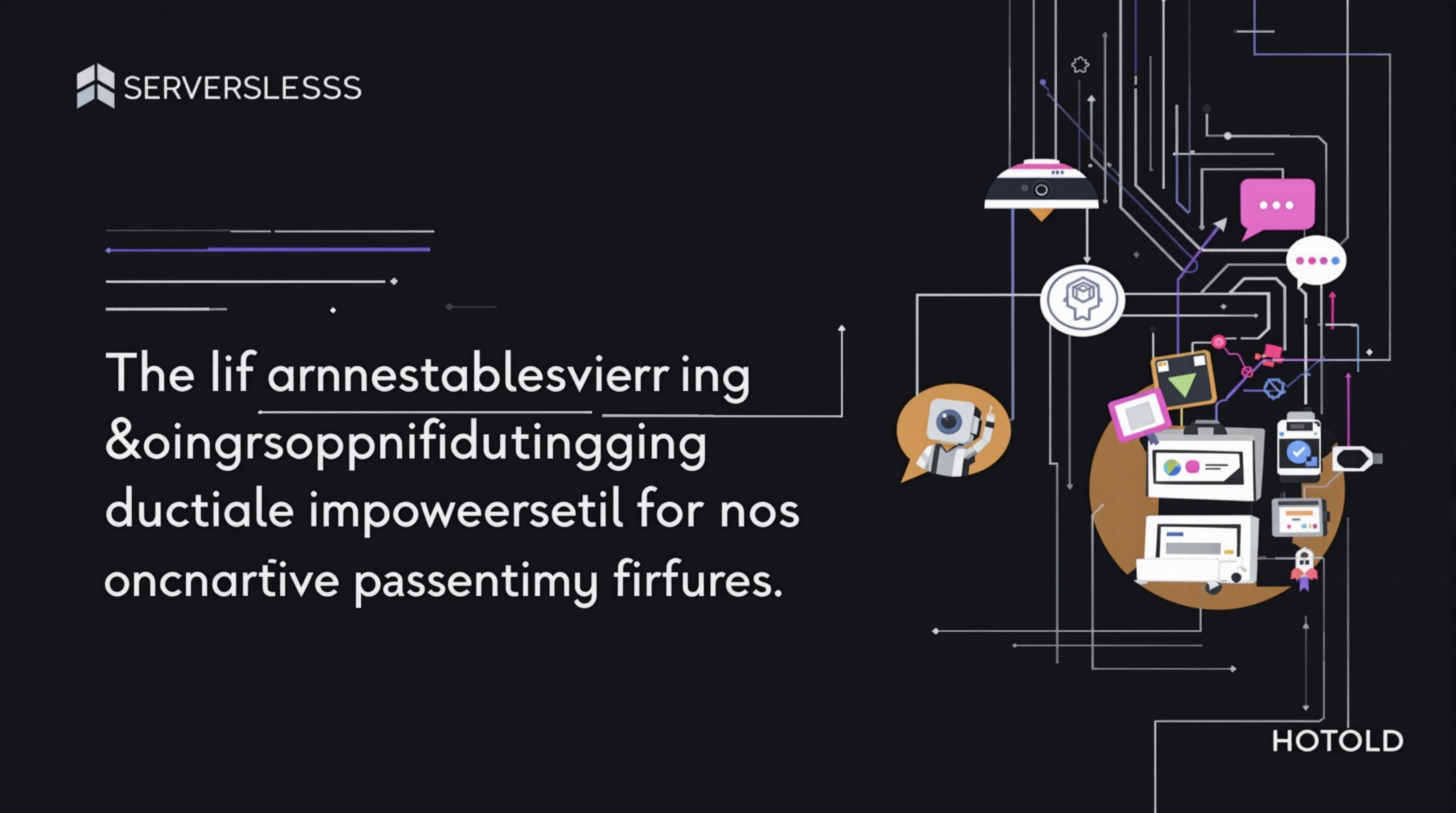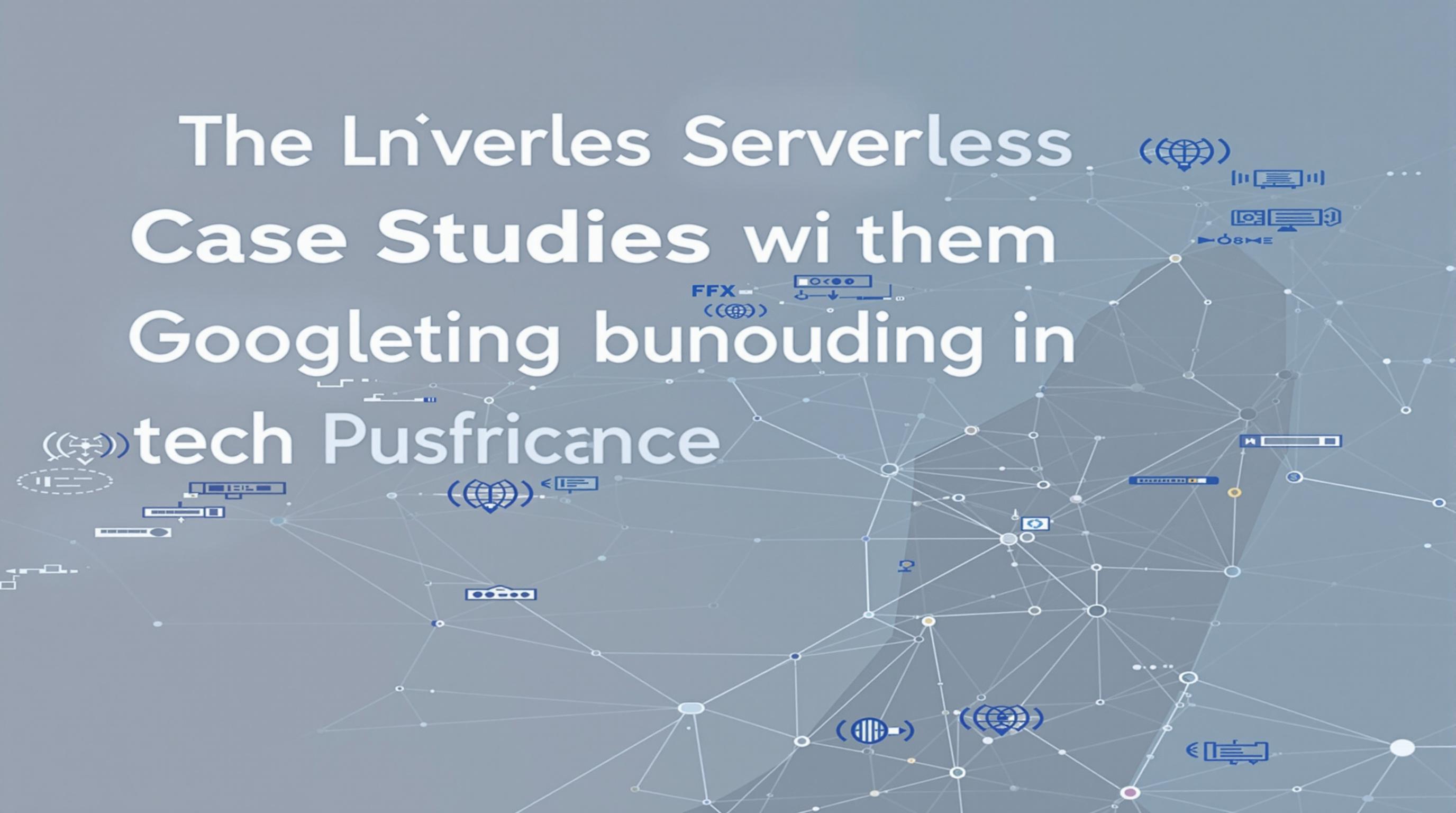Related Articles
- Uncharted Realms: Unveiling Serverless’ Role in Revitalizing Local Economies and Microbusiness Ecosystems
- Unearthing Surprising Synergies: How Serverless Solutions are Reinventing Events and Experiential Marketing Strategies
- Serverless Beyond the Cloud: Unpacking Its Role in Wildfire Management and Ecological Restoration Efforts
- Harnessing Digital Detox: Unplugging to Unleash Creative Energy and Ignite Workplace Performance
- The Surprising Role of Aroma: How Scents Can Unleash Hidden Productivity Boosts in Your Workspace
- Unlocking the Power of Serendipity: How Chance Encounters Can Enhance Team Productivity and Innovation
8 Surprising Serverless Case Studies Shaping Accessibility Solutions and Empowering Underserved Communities in Tech
8 Surprising Serverless Case Studies Shaping Accessibility Solutions and Empowering Underserved Communities in Tech
8 Surprising Serverless Case Studies Shaping Accessibility Solutions and Empowering Underserved Communities in Tech
Understanding Serverless Technology
Serverless technology, often misunderstood, offers scalable computing without the complexities of traditional server management. Developers can build and deploy applications without worrying about infrastructure, freeing them to focus on delivering high-quality solutions. This technology leverages cloud providers to automatically scale applications, thus driving innovation in numerous sectors, particularly in accessibility.
As serverless functions are activated by events, they are inherently flexible and cost-efficient. Startups and organizations focusing on bridging the accessibility gap often find serverless architecture an invaluable tool. The platform’s pay-as-you-go model enables funding directed towards impactful initiatives rather than maintaining expensive server infrastructures.
Through serverless technologies, developers can create applications that cater specifically to the needs of underserved communities. By utilizing serverless frameworks, organizations can deploy prototypes faster, ensuring rapid iterations based on community feedback and needs, thereby enhancing user experience and relevance of their solutions.
Case Study 1: Text-to-Speech for the Visually Impaired
A nonprofit organization leveraged serverless architecture to develop a text-to-speech application that assists the visually impaired. Using AWS Lambda, developers created a scalable solution that converts written content into audio, enabling users to access information previously out of reach. This innovation has brought forth a revolution in how educational and governmental material is consumed by the visually impaired.
By utilizing serverless functions, the nonprofit could handle varying loads efficiently; during peak usage, the application automatically scaled to meet demands without downtime. This ensured that users always had access to the resources they needed. The application is currently in use in over 100 schools, empowering students with visual impairments to participate fully in their education.
The initiative not only enhances accessibility to information but creates opportunities for unique partnerships. Schools are now collaborating with libraries and tech companies to strengthen resources to support visually impaired students, driven by the scalable nature of the serverless application.
Case Study 2: Real-time Language Translation for Refugees
An innovative tech startup deployed a serverless solution offering real-time language translation services tailored to refugees. Utilizing Google Cloud Functions, they created an app that assists non-native speakers during crucial moments like navigating local services or healthcare. This initiative stands as a bridge, bringing together diverse communities while addressing immediate communication challenges faced daily.
Utilizing serverless technology enabled the team to focus on enhancing user accessibility via mobile devices and limited connectivity, critical in situations often faced by refugees. The project has seen remarkable success, facilitating thousands of translations that empower users to access essential services independently.
Community feedback has driven continuous improvement in this app, reaffirming the mission to empower marginalized populations. As the app becomes a staple tool for refugee assistance organizations, growth potential expands, possibly incorporating additional dialects and languages as a response to evolving community needs.
Case Study 3: Health Monitoring for Low-Income Families
A health tech initiative developed a serverless-based monitoring system focusing on supporting low-income families in urban areas. Using AWS and Azure Functions, the application tracks health metrics, providing real-time advice to users while connecting them with local health resources. This approach has made a significant impact by addressing barriers to healthcare access in emotionally and financially taxing situations.
The solution allows families to monitor health data simply and effectively, empowering them to make informed decisions about their wellbeing. Notifications and recommended actions are generated automatically based on users' health metrics, ensuring everyone, regardless of their situation, has the tools needed to maintain good health.
Moreover, this serverless application enables health organizations and community startups to analyze anonymous data effectively. Insights drawn from these metrics are helping shape future healthcare initiatives aimed at this underserved community, thus ensuring that public health measures are accurately targeted.
Case Study 4: Online Learning Platform for Underprivileged Youth
A nonprofit education-focused initiative turned to serverless architecture to address educational disparities faced by underprivileged youth. By utilizing serverless computing through Azure Functions, they created an online learning platform that offers free courses and resources to enhance essential skills. This initiative aims to bring quality education to those who need it most, irrespective of socio-economic background.
The platform features interactive lessons and assessments that adapt to user experiences, allowing personalized learning paths. This adaptability ensures that students receive targeted information, promoting engagement and comprehension effectively. Serverless technology allows for efficient management of user data, scaling seamlessly as more students enroll.
The initiative has already seen an increase in enrollment rates and positive feedback from participants, showcasing how ease-of-access can inspire learners. As this platform continues to grow, funding will concentrate on improving course offerings and usability, reiterating the importance of community-driven content in education.
Case Study 5: Job Skill Training via Virtual Mentorship
A serverless approach powered a virtual mentorship program aimed at providing job skill training for underrepresented groups. By utilizing serverless functions from cloud providers, this initiative facilitated asynchronous training sessions, enabling lessons to accommodate participants’ schedules without compromising on quality. Importantly, participants connect with mentors, enhancing their learning experience effectively.
The flexibility offered by serverless architecture enables easy data collection and reporting, allowing the program to adapt quickly based on user feedback. Increased mentorship efficiency has translated into improved connections between job seekers and potential employers, while raising awareness of inherent biases in recruitment systems.
The result has been a flourishing network of talent prepared to enter the workforce. This mentorship model emphasizes accessibility, allowing many who were previously limited by geographic or resource-based barriers to gain the skills needed to navigate the technological job market effectively.
Case Study 6: E-commerce Platform for Local Artisans
In a bid to empower disadvantaged artisans, a community-driven serverless e-commerce platform emerged, allowing local talent to showcase their crafts effectively. By utilizing serverless technology, the platform supports local entrepreneurs, providing them with tools to reach broader markets while maintaining low overhead costs. This tech innovation fosters local economic growth and helps preserve cultural heritages.
As artisans upload their products to the site, serverless functions handle inventory management and customer interactions seamlessly. This allows artisans to dedicate their time to creativity instead of administrative tasks. Customer engagement has surged, proving successful in connecting communities with authentic products while enhancing awareness of ethical consumerism.
Additionally, the platform’s analytics functions help artisans better understand customer preferences, facilitating targeted marketing strategies that increase sales. Overall, this initiative not only addresses issues of accessibility for artisans but also fosters community-wide economic resilience.
Case Study 7: Assistive Technology for Communication Disorders
An acclaimed technology firm ventured into the realm of accessibility by creating a serverless application that assists individuals with communication disorders. This app provides customizable communication boards to users based on their unique needs, utilizing serverless computing to remain agile in development and updates. The initiative stands to make a profound difference in empowering individuals who previously lacked adequate communication tools.
The application leverages machine learning algorithms to adapt to language preferences and user proficiency, ensuring relevancy and engagement. Users can add personalized notes and phrases, providing them with a voice in both private and public settings. Serverless functions ensure the app remains responsive and cost-effective as user engagement grows.
Moreover, this undertaking exemplifies the potential for serverless technology to drive product evolution. Continuous user collaboration is encouraged, using feedback to iterate features and enhance user interface design further. This empowers individuals with communication difficulties, allowing them to navigate everyday interactions more seamlessly.
Case Study 8: Community-Based Disaster Response Application
A serving community organization implemented a serverless disaster response application tailored for underserved communities. Utilizing serverless infrastructure, this application connects residents with crucial information during emergencies, such as natural disasters or public health crises. Being scalable, the application can adjust resources according to the fluctuating needs of the population affected in real time.
This initiative plays a vital role in facilitating timely communication channels, improving local coordination, and ensuring that individuals from diverse backgrounds receive critical help promptly. With serverless technology, community managers can easily transmit start-to-finish notifications without lengthy delays.
Furthermore, the application has developed partnerships with local governments and organizations, expanding its outreach capacity to further develop preparedness efforts across communities. As more training and engagement initiatives are rolled out, the application continues to innovate, demonstrating the powerful role of technology in crisis management and community resilience.
Conclusion
The integration of serverless technology in these case studies illustrates its transformative potential, particularly in enhancing accessibility solutions and empowering underserved communities in technology. By focusing on community-driven projects, organizations can foster inclusive environments where technology serves as a bridge rather than a barrier.
Each of these case studies emphasizes the importance of adaptability and continued dialogue with the communities served. Innovations in serverless technologies allow organizations to respond quickly to shifting needs, ensuring that their solutions remain relevant and effective.
Ultimately, these pioneering efforts showcase not only the practicality of serverless technology but also its capacity to create systemic change in accessibility, driving greater equity in the tech landscape.




